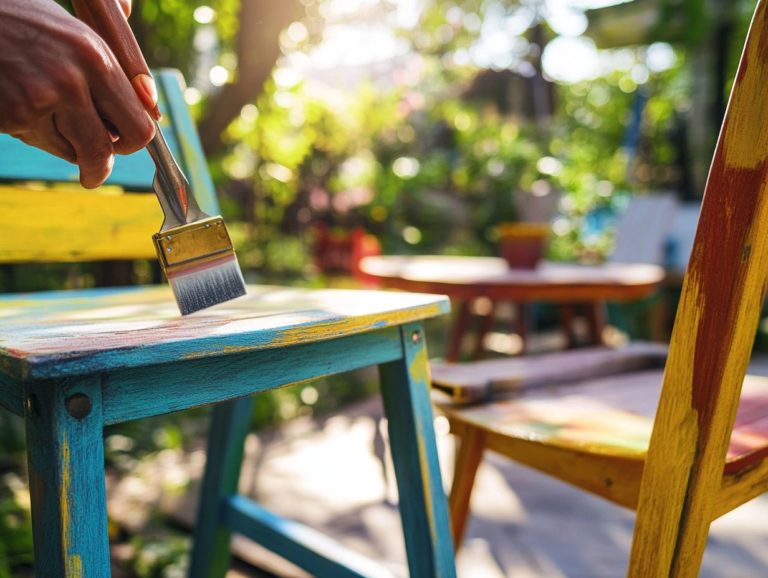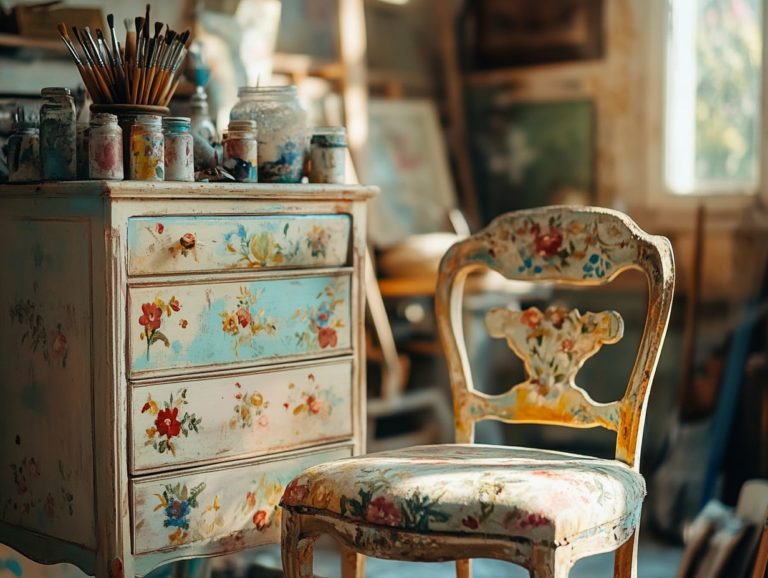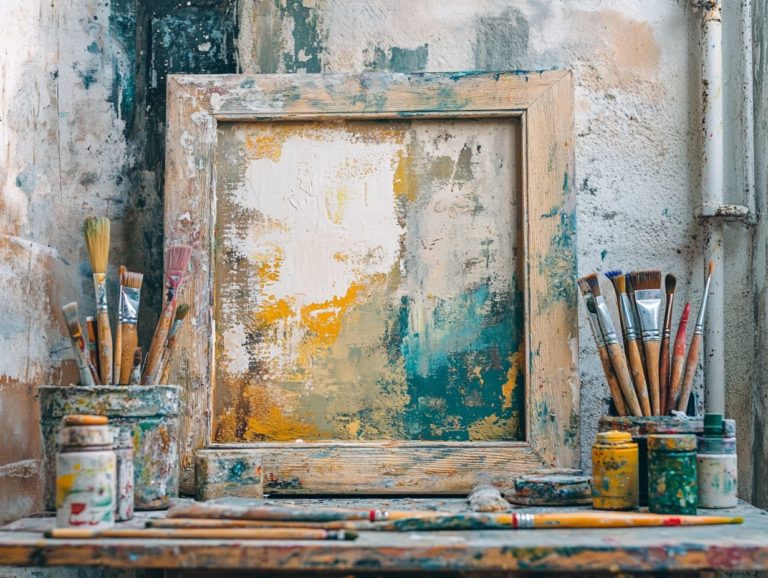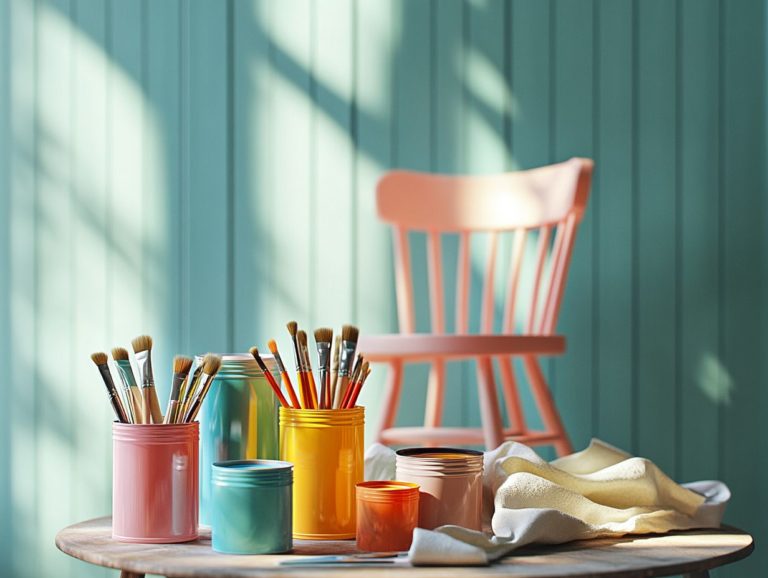Top 5 DIY Restoration Mistakes to Avoid
Embarking on a DIY restoration project, especially in home renovation, can be an exhilarating and rewarding journey. However, it s all too easy to stumble into common traps along the way.
From overlooking crucial safety precautions to underestimating the time and work required, these pitfalls can transform what should be a fulfilling endeavor into a costly headache. This article dives in and uncovers the top five mistakes to avoid for a successful DIY restoration!
Whether you’re seasoned in the craft or just stepping into the world of restoration, this guide will equip you with the knowledge to navigate your next project confidently, ensuring you don t fall into common DIY mistakes.
Contents
- Key Takeaways:
- 1. Not Doing Proper Research
- 2. Skipping Safety Precautions
- 3. Underestimating the Scope of Work
- 4. Using Incorrect Tools or Materials
- 5. Rushing the Process
- What Are the Benefits of DIY Restoration?
- Frequently Asked Questions
- What are the top 5 DIY restoration mistakes to avoid?
- How can I avoid using incorrect tools and materials during a DIY restoration project?
- Why is it important to take my time and not rush through a DIY restoration project?
- What are some ways to properly prepare the space before starting a DIY restoration project?
- Are there any specific steps I should not skip during a restoration project?
- When should I seek professional help for a restoration project?
Key Takeaways:
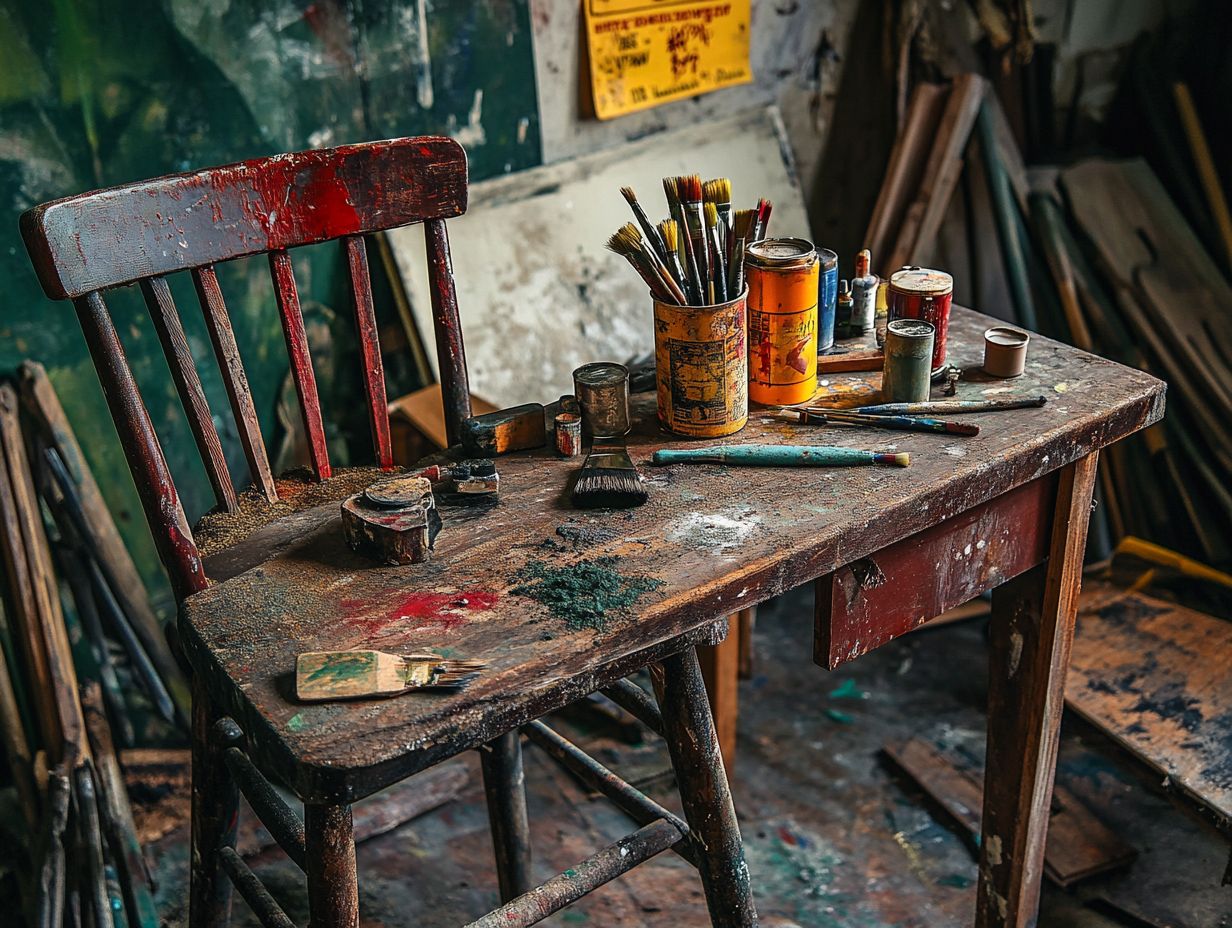
- Research thoroughly before starting your DIY project and always prioritize safety to prevent costly mistakes.
- Don’t underestimate the scope of work; consider hiring a professional if needed to avoid further damage.
1. Not Doing Proper Research
In home renovation, skimping on thorough research can lead to design missteps that lower your property value and stretch your budget thin. Whether you’re channeling your inner Emily Henderson or diving into DIY projects, understanding the renovation process is crucial.
This knowledge helps you sidestep costly blunders and paves the way for a successful transformation. Staying updated on current home renovation trends empowers you to make informed decisions that elevate your living spaces and resonate with market expectations.
By budgeting strategically, you can avoid those pesky surprises like over-designing or splurging on extravagant features that may not pay off in the long run. Trusted resources like HGTV, Good Housekeeping, and HomeGuide.com, along with magazines such as ELLE Decor and Unique Homes Magazine, can provide invaluable insights and inspiration.
Underestimating the importance of research puts you at risk for financial surprises that could derail your renovation aspirations and lead to outcomes that fall short of your vision.
2. Skipping Safety Precautions
When you embark on a home renovation project, overlooking essential safety precautions can lead to serious consequences. It’s vital to prioritize safety throughout the entire process.
As a homeowner, you should be well-acquainted with the proper handling of appliances and tools. Following safety gear protocols like wearing gloves, goggles, and masks is crucial for shielding yourself from potential hazards.
Familiarizing yourself with local building codes ensures compliance and guarantees that your renovation meets safety standards. For complex tasks, especially involving HVAC or plumbing, consulting professionals is imperative; their expertise can save you from costly and dangerous mishaps down the road.
3. Underestimating the Scope of Work
Underestimating the scope of work in home renovation projects can lead to unwelcome financial surprises and an overextended budget. Careful planning and assessment are crucial before embarking on any upgrades.
To fully understand the renovations required, engage in thorough research and consult professionals who can shed light on potential challenges. Homeowners often overlook the hidden costs tied to materials, labor, and unexpected issues that arise during the process.
Establishing a realistic project budget means meticulously outlining all anticipated expenses while setting aside a contingency fund for unforeseen costs. Enlisting skilled professionals can pinpoint critical areas needing attention, ensuring the renovation process runs smoothly and aligns with your long-term aspirations.
Ready to transform your home? Start your DIY restoration journey today with these tips!
4. Using Incorrect Tools or Materials

Using the wrong tools or materials during your home renovation can lead to costly mistakes that undermine the quality and durability of your work. This highlights the critical need for meticulous planning and careful selection of products, especially from trusted brands like Benjamin Moore or IKEA.
Choosing the right paintbrush for a flawless finish or opting for sturdy plywood instead of cheaper options can make a world of difference. Homeowners often underestimate the significance of using appropriate materials, which can result in annoying issues down the line, such as peeling paint or warped shelves.
On the flip side, investing in better materials not only boosts the durability of your projects but also saves you money in the long run by reducing the need for frequent repairs and replacements. By thoughtfully considering these factors, you can create a more successful and satisfying renovation experience.
5. Rushing the Process
Rushing through home renovations often leads to design blunders and a budget that’s stretched thinner than your patience. This can result in miscommunication with contractors. Pace yourself and allocate sufficient time for each phase.
Don t get caught in miscommunication with your contractors! If they don t fully grasp your vision or timeline, designs may miss the mark. This often results in unnecessary rework, which can skyrocket your costs.
To avoid these pitfalls, effective time management and careful planning are your best allies. Establish clear milestones and check in with your contractors regularly. A comprehensive renovation plan with detailed timelines helps keep your project organized and navigate chaos.
What Are the Benefits of DIY Restoration?
DIY restoration projects, such as kitchen renovations, come with many benefits. You can save on labor costs and enjoy the satisfaction that comes from your personal involvement. You have the chance to creatively enhance your home with unique upgrades that reflect your personality.
Diving into tasks like painting, woodworking, or even landscaping allows you to gain valuable skills. This transforms a simple renovation into a rewarding learning experience. Imagine updating outdated cabinetry with a fresh coat of paint or installing a stylish backsplash in your kitchen. These projects can breathe new life into your space and significantly boost its value.
Embracing DIY efforts gives you a profound sense of accomplishment and ownership, making your home feel more inviting and distinctly yours.
Plus, engaging in these projects can lead to meaningful connections within your community. Local workshops and online forums provide excellent support and camaraderie among fellow home enthusiasts.
What Are the Risks of DIY Restoration?
While tackling a DIY restoration project can be fulfilling, it also brings risks such as unexpected financial burdens and potential design blunders. The steep learning curve of mastering new skills and tools can lead to expensive repairs.
Entering these projects with the best intentions is common, but it’s easy to underestimate actual costs. From materials to unforeseen expenses, costs can add up quickly. Lacking necessary expertise can lead to errors that result in expensive repairs later on. To avoid common pitfalls, it’s helpful to know the top 5 vintage lighting mistakes to avoid. Recognize when your skills might not be sufficient and consider bringing in a professional.
Knowing when to call in an expert can save you both time and money, ensuring that the final outcome is not just aesthetically pleasing but also structurally sound.
Ready to start your DIY projects with confidence? Embrace the journey and enjoy the process!
What Are Some Common DIY Restoration Projects?

Common DIY restoration projects, such as kitchen renovations, bathroom upgrades, and landscaping, offer you the perfect opportunity to personalize your space while boosting your property s value. These projects ensure that your home improvement endeavors don t fall flat.
These endeavors unleash your creativity and allow you to tackle varying levels of complexity from simple paint jobs to more intricate installations like cabinetry or tile work.
Take a kitchen renovation, for example. It can significantly enhance the functionality of your cooking space while upgrading its visual appeal with modern finishes and appliances.
Similarly, bathroom upgrades, like installing new vanities or contemporary lighting fixtures, can transform an ordinary area into a luxurious retreat.
Landscaping projects can inject fresh energy into your outdoor space, making your property feel more inviting and enhancing its curb appeal. Each project, from simple tasks to larger renovations, is not just about improvement; it s a chance to express your personal style and make your home truly yours.
How Can One Prepare for a DIY Restoration Project?
Preparing for your DIY restoration project requires careful planning, budgeting, and gathering the right tools, including high-quality materials, to ensure seamless execution and great results!
To get started, it’s vital to conduct thorough research on materials. This knowledge gives you the power to choose the best options tailored for your specific task.
By creating a detailed project budget, you enable better financial management and safeguard against unexpected expenses that could derail your plans.
Consulting with experienced designers and trusted home improvement magazines provides invaluable tips and inspiration.
This strategy increases your chances of achieving your desired aesthetic while ensuring the longevity of your restoration efforts.
What Are Some Tips for Successful DIY Restoration?
Successful DIY restoration is all about effective planning and execution, requiring a harmonious blend of creativity, resourcefulness, and meticulous attention to detail.
A clear timeline boosts your project’s efficiency, breaking down tasks into manageable chunks and preventing that all-too-familiar feeling of overwhelm.
Prioritizing the sourcing of quality materials is essential; after all, these components dictate the durability and aesthetic appeal of your final masterpiece.
Utilizing resources like HGTV or various online tutorials can offer invaluable insights from seasoned experts, refining your techniques and sparking innovative ideas.
Engaging with these platforms enhances your learning curve and connects you with a community of like-minded DIY enthusiasts, making your journey both enjoyable and immensely rewarding.
When Should One Seek Professional Help for Restoration?
Knowing when to seek professional help for your restoration projects is essential, particularly when tackling complex tasks that could lead to costly mistakes if not handled correctly.
Watch for indicators like extensive structural changes, complicated electrical installations, or major plumbing issues. These often signal that it s time to bring in a skilled contractor.
Such tasks demand not just expertise but also strict adherence to safety standards and local regulations.
By collaborating with experienced contractors and design-build firms, you tap into a wealth of knowledge that ensures your projects are completed efficiently and within budget.
Working with professionals significantly reduces the stress that often accompanies large renovations, providing you with peace of mind every step of the way.
Frequently Asked Questions
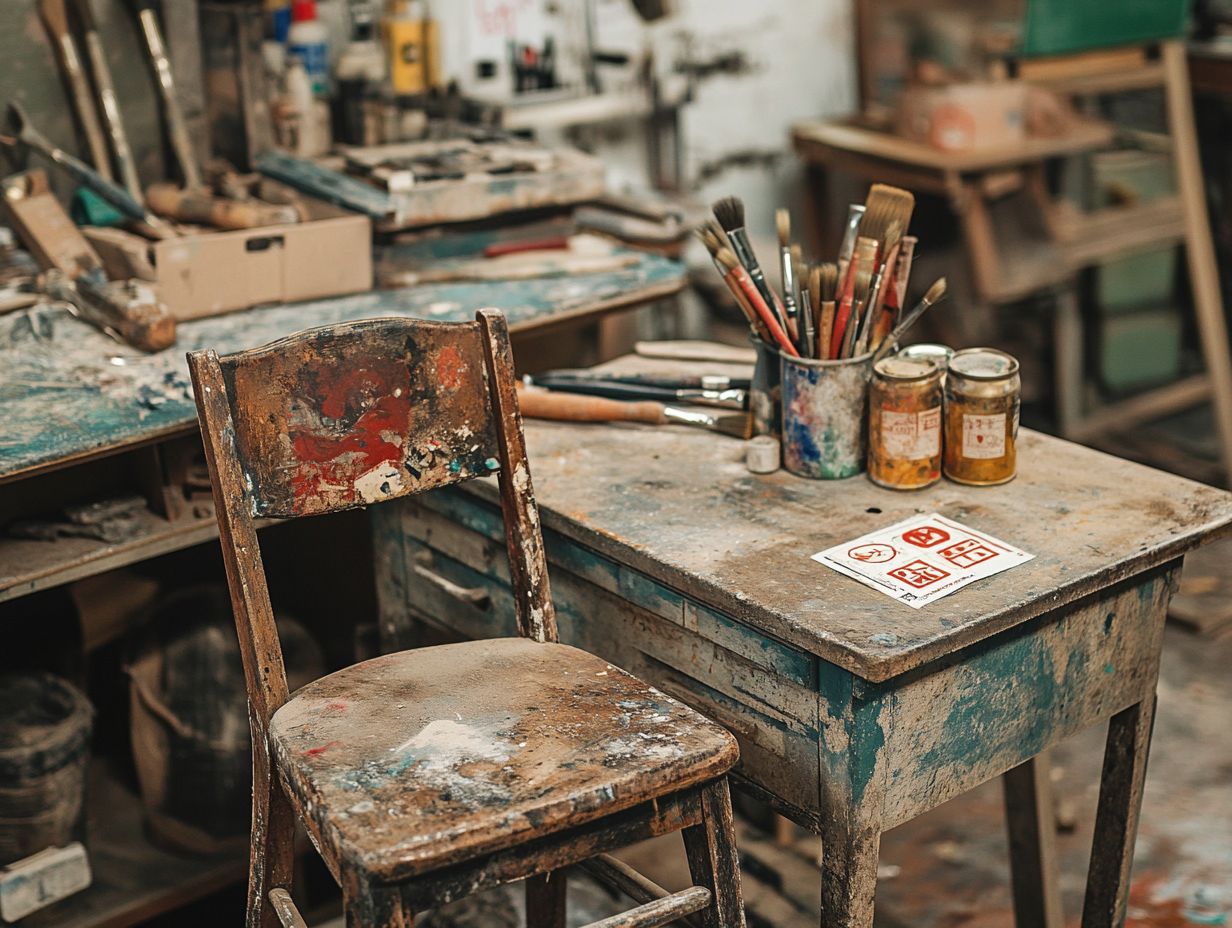
Have more questions? Let’s dive in!
What are the top 5 DIY restoration mistakes to avoid?
1. Using incorrect tools and materials: Research the right tools and materials before starting. This will save you time and frustration.
2. Rushing the process: Excitement can lead to rushing, which often results in mistakes. Take your time for better quality work.
3. Not preparing the space: Properly prepare your work area. Protect floors and furniture, and clear away obstacles.
4. Skipping necessary steps: Each restoration project has specific steps. Follow all instructions closely for the best results.
5. Not seeking professional help: Know when to call in a pro. Tackling complex tasks without the right skills can lead to costly mistakes.
How can I avoid using incorrect tools and materials during a DIY restoration project?
Do thorough research before you begin. Seek advice from reliable sources and ask hardware store employees for guidance.
Why is it important to take my time and not rush through a DIY restoration project?
Rushing can lead to sloppy work that may ruin your project. By taking your time, you’ll achieve a better outcome, saving time and money.
What are some ways to properly prepare the space before starting a DIY restoration project?
Protect your surfaces with drop cloths or plastic sheets. Remove any obstacles that could interfere with your work.
Are there any specific steps I should not skip during a restoration project?
Yes! Every project has crucial steps. Make sure to read and understand all instructions before you start.
When should I seek professional help for a restoration project?
If a project feels beyond your skill level, it’s smart to ask for professional help. Some tasks require special expertise or tools that you may not have.


